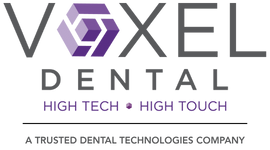Why 3D Printing is so Important in Digital Dentistry?
Overall, 3D printing has revolutionized dentistry, offering dentists enhanced capabilities, improved patient care, and more efficient workflows. As the technology continues to advance, it is likely to play an even more critical role in dentistry's future.
-
Customization: 3D printing enables the creation of highly customized dental devices, such as crowns, bridges, and aligners, tailored to each patient's unique oral anatomy. This level of personalization ensures a better fit and improves overall treatment outcomes.
-
Time and Cost Efficiency: Traditional dental manufacturing processes can be time-consuming and costly. With 3D printing, dentists can produce dental appliances and models in-house, reducing turnaround times and expenses associated with outsourcing or traditional fabrication methods.
-
Improved Communication: 3D printing allows dentists to create physical models, making it easier to communicate treatment plans with patients. Patients can visualize the proposed procedures better, leading to increased understanding and satisfaction.
-
Prototyping and Iteration: 3D printing enables dentists to quickly create prototypes of dental appliances and test them on patients before final production. This iterative process ensures that the final device meets the specific needs and requirements of the patient.
-
Digital Workflow Integration: 3D printing complements digital dentistry workflows, such as intraoral scanning and computer-aided design (CAD). This seamless integration improves efficiency, accuracy, and precision throughout the treatment process.
-
Complex Designs: 3D printing allows for the fabrication of intricate and complex dental structures that would be challenging or impossible to achieve with traditional methods. This opens up new possibilities for innovative dental solutions.
-
Patient Comfort: Dental appliances produced through 3D printing are often lighter and more comfortable for patients to wear. The improved fit and reduced bulk can lead to increased patient compliance and satisfaction.
-
Surgical Guides and Implants: 3D printing is utilized to create surgical guides for precise implant placement during oral surgeries. This ensures minimal invasiveness, shorter healing times, and improved success rates for dental implants.
-
Temporary Restorations: Dentists can use 3D printing to produce temporary crowns, bridges, and dentures on-site, saving time and reducing the inconvenience for patients.
-
Research and Education: 3D printing technology is also valuable for dental research and education. Dental schools and researchers can use 3D printed models to simulate complex cases and train future dentists in advanced procedures.
There are a wide variety of Dental 3D Printers available to fit you needs. Please contact us for a more in-depth conversation or read about the available printer we can provide at Voxel Dental today!


Comments
Dental Cad-Cam Solutions said:
This post explains the benefits of 3D printing in dentistry so clearly. It’s exciting to see how innovation is transforming patient care. Well done! Visit Here – https://xyzdental.com.au/cad-cam-solutions/
suwaidi online said:
UV printing’s ability to print on almost any material with vibrant, durable results makes it perfect for custom signage, packaging, and promotional items that need to withstand the elements.